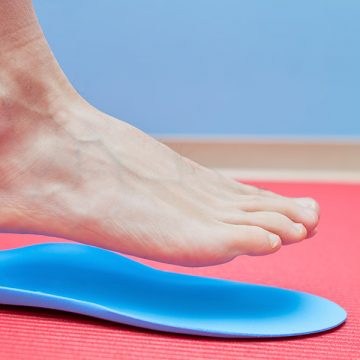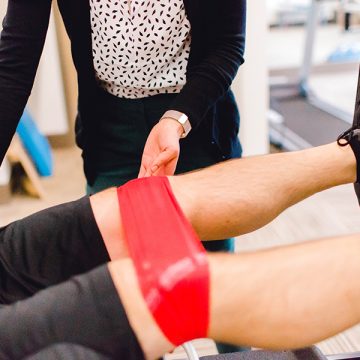Common Pickleball Injuries and How to Prevent Them
Hypothetically, pickleball doesn’t sound like high-risk game, but don’t let its name fool you. It can be both physically demanding and addictive!
Whether you are a veteran pickleballer or a newbie this blog will help navigate some of the most common pickleball injuries and give you a few tips on how to prevent them. St. Vital Physiotherapy in south Winnipeg is here to help you stay engaged in your sport and on the court!
The Most Common Types of Pickleball Injuries
In pickleball, strains, sprains, falls, and bumps are the most common injuries. These injuries can be both minor and severe. Tennis elbow, also called the Pickleball elbow, is the most frequent pickleball injury found in players so far.
1. Lateral Epicondylitis (Tennis or Pickleball Elbow)
Lateral epicondylitis involves inflammation of the tendons that connect the forearm muscles to the outside of the elbow join. It results in pain on the outer side of the elbow that can radiate into the forearm and wrist. It is typically caused by repetitive use of the wrist and arm.
Prevention:
- Warm up before playing and stretch afterward.
- Build time on the court gradually to avoid overuse and microtrauma.
- Choose a paddle with the right grip size.
- Try some wrist curl and gripping exercises strengthen the forearm.
- Learning proper serving action from a coach or senior player.
- Consider and elbow strap to reduce stress.
Learn more about exercises to prevent and treat elbow pain: Video exercises for elbow pain | The Chartered Society of Physiotherapy (csp.org.uk)
2. Shoulder Pain and Rotator Cuff Injuries
Shoulder problems are common with any racquet sport, especially those involving shots overhead. In pickleball, overhead shots are essential and require extra effort with the shoulder in a less stable position, increasing the risk of injury, particularly when done repetitively. In addition, forehands, backhands, and volleys require the continuous use of the same muscles in different ways, which can also contribute to overuse and strain.
Prevention:
- Exercises to improve the coordination of your shoulder blade and rotator cuff muscles can both prevent and treat shoulder injuries. Examples include facedown shoulder blade squeezes and resistance band external rotation and “pull-aparts”.
- If you have a history of chronic shoulder issues, consider minimizing overhead shots and aiming for more shoulder friendly options.
- Warm-up your shoulders before playing and stretch afterwards.
- Slowly ramp up the amount of time you play. Building up over time will greatly assist you body to being accustomed to the strain and improve muscle endurance.
Learn more about shoulder exercises: 15 Scapular Stabilization Exercises: Shoulder Pain Explained (shoulder-pain-explained.com)
3. Knee Pain
As with any court sport pickleball requires the knees to accept quick movements in all directions, sustained crouching, shuffling, lunges, and even some running and jumping on a hard-court surface. As the muscles that support the knee fatigue, stress on various tissues such as ligaments, tendons and the menisci increases, which can lead to pain and injury.
Prevention:
- A dynamic warm-up to prepare the soft tissues and joints for play.
- Strengthen the quads, hamstrings gluts and calves to reduce fatigue and maximize their ability to stabilize the knee joint.
- Sport specific training like lateral skipping, shuffling and lunges.
- Players with osteoarthritis should not be afraid to play pickleball but should listen to their body and back off if the pain becomes intense or worsens over time.
- If you have pain after pickleball try cooling off with an ice pack If you think you’ve injured your knee, seek guidance promptly by a qualifies professional.
Learn more about different types of knee injuries here: Knee Pain Info | Knee Pain Info
For some exercise ideas check out 7 Knee Exercises Essential for Pickleball Players | NatraCure
4. Low Back Pain
The repetitive movements such as bending, reaching, and twisting can sometimes trigger lower back pain. Most injuries are postural, muscular, or related to a flare-up of arthritis. Common causes of lower back pain are weakness of the core, poor posture, and dynamic instability of the spine.
Prevention:
- Maintain a strong core. Starting with basic core work like planks and superman’s, and Russian twists can be helpful.
- Strengthen your legs, especially your quads, hamstrings and gluts. This will help you from needing to overcompensate with your back muscles.
- A warm-up is extremely important to reduce sprains and strains. A gradual sport specific warm-up is often recommended, but even a brisk walk before stepping on the court can help.
- Take breaks between games if you start getting sore and take that tie to do some gentle dynamic stretches.
- Bend at your hips and knees to get low for dinking, rather than bending from your waist.
- Post pickleball stretching can relax your muscles and ensure full range of motion, further reducing your risk of injury.
- If you experience lower back pain regularly after pickleball, talk to a Physiotherapist.
Learn more about back strains: Back Strains / Back Sprains | Back Pain Info
5. Calf and Achilles Tendon Injuries
Pickleball, like other racquet sports, requires quick direction changes, resulting in stress on the Achilles tendon and calf complex. The explosive forces transmitted through the tendon when pushing off to hit to the ball can be significant. Combined with twisting or torsional forces, the strain is even higher.
Achilles rupture is also a concern, especially in men over age 40. As we get older wear and tear on soft tissues increases, and they become less elastic and tolerant of stress. Men are 10 times more likely than women to rupture the Achilles tendon. Women however are also at risk, especially those who wear high heels regularly, as heels adaptively shorten the calf complex. Transitioning to sport in flat shoes can overstretch the calf, resulting in tendon strain.
Prevention:
- Listen to your body. If you are experiencing recurrent or persistent Achilles pain, consult a qualified medical professional for guidance.
- Warm up gradually, and include some dynamic calf stretches. For some ideas of dynamic calf stretches check out Dynamic Stretches for Calves – SportsRec.
- Have your foot biomechanics checked, and get individualized guidance on footwear. Physiotherapists are uniquely qualified to evaluate the biomechanics of not only your feet, but your entire kinetic chain.
- Regular calf stretching. The explosive movements on the pickle ball court can contribute to calf tightness. Regular stretching and foam rolling can help.
- Strengthening exercises: an exercise program designed to progressively load the tendon can make it more resistant to injury.
If you’re interested in preventative calf strengthening exercises, check out this link: The 12 Best Exercises to Strengthen Your Calves (verywellfit.com). If you already have a calf or Achilles strain, consult a qualified professional. At St. Vital Physiotherapy we provide customized rehabilitation programs and footwear guidance based on a complete biomechanical assessment, speeding recovery, and maximizing results.
Struggling with Pickleball Injuries?
We all love pickleball and the outlet it provides both physically and mentally, but we need to consider the long game. It’s important to listen to your body and you may even have to set limits for yourself to stay healthy and pain free. If you’re sore after playing for 3 hours, try cutting your game time down to one to two hours. If you’re getting pain after playing 5 times a week, cut down to 2 or 3 times a week. Taking a relative rest and building back up gradually allows the body to heal and grow stronger.
Seek medical attention from a qualified medical professional for both new acute and minor ongoing injuries. Physiotherapists are movement experts. At St. Vital Physiotherapy we provide individualized assessments with customized treatment and exercise programs to help you achieve your goals. Consider us your rapid recovery team!
If you’re dealing with an injury, or want more guidance on injury prevention, give us a call at 204-255-0597.
For more information about acute injury care check out our blog:
Acute Injury Guide – St. Vital Physio (stvitalphysio.ca)
For more information on these and other pickle ball injuries, check out this blog post:
21 Most Common Pickleball Injuries and How to Prevent Them | Pickleball Study























